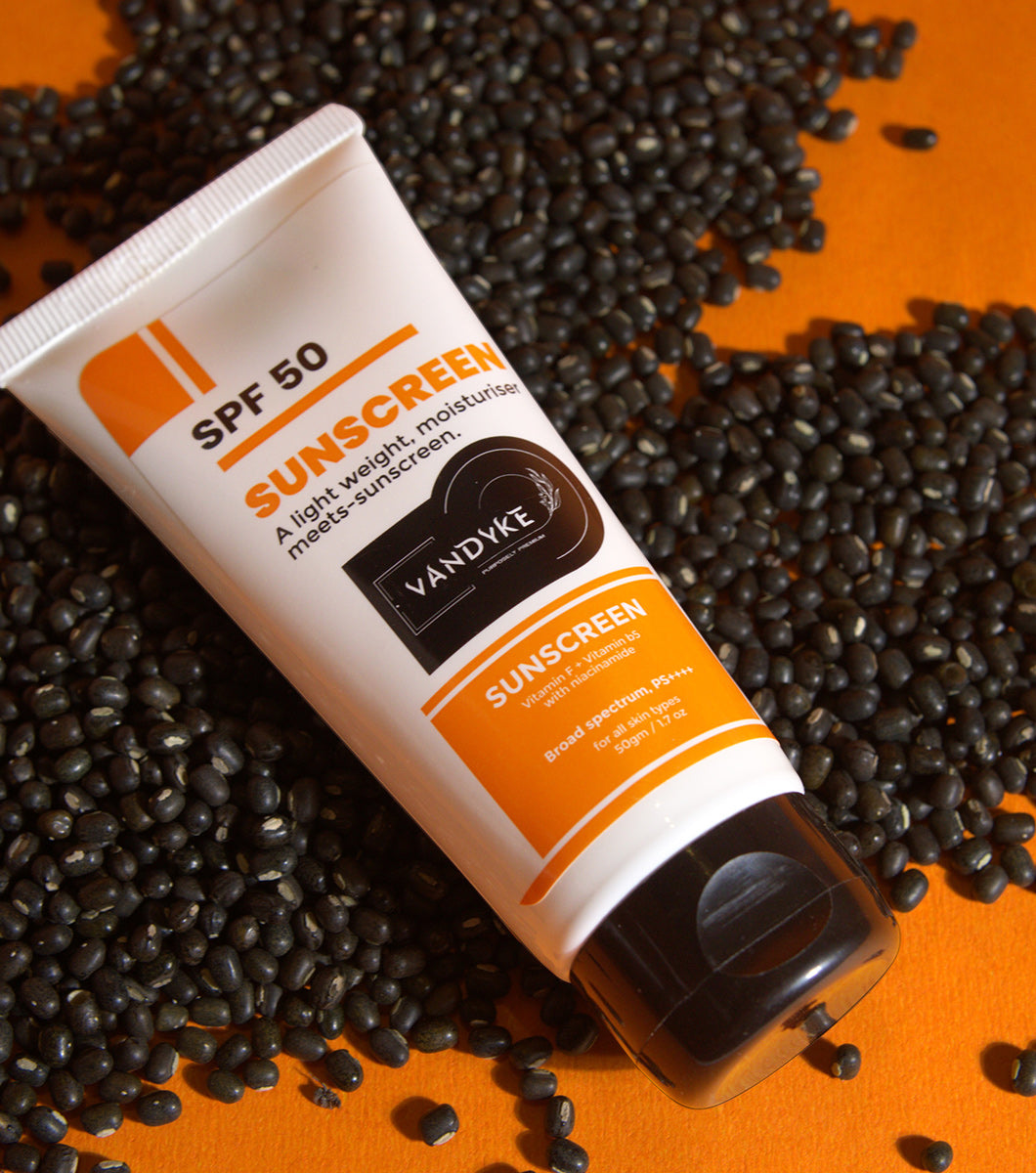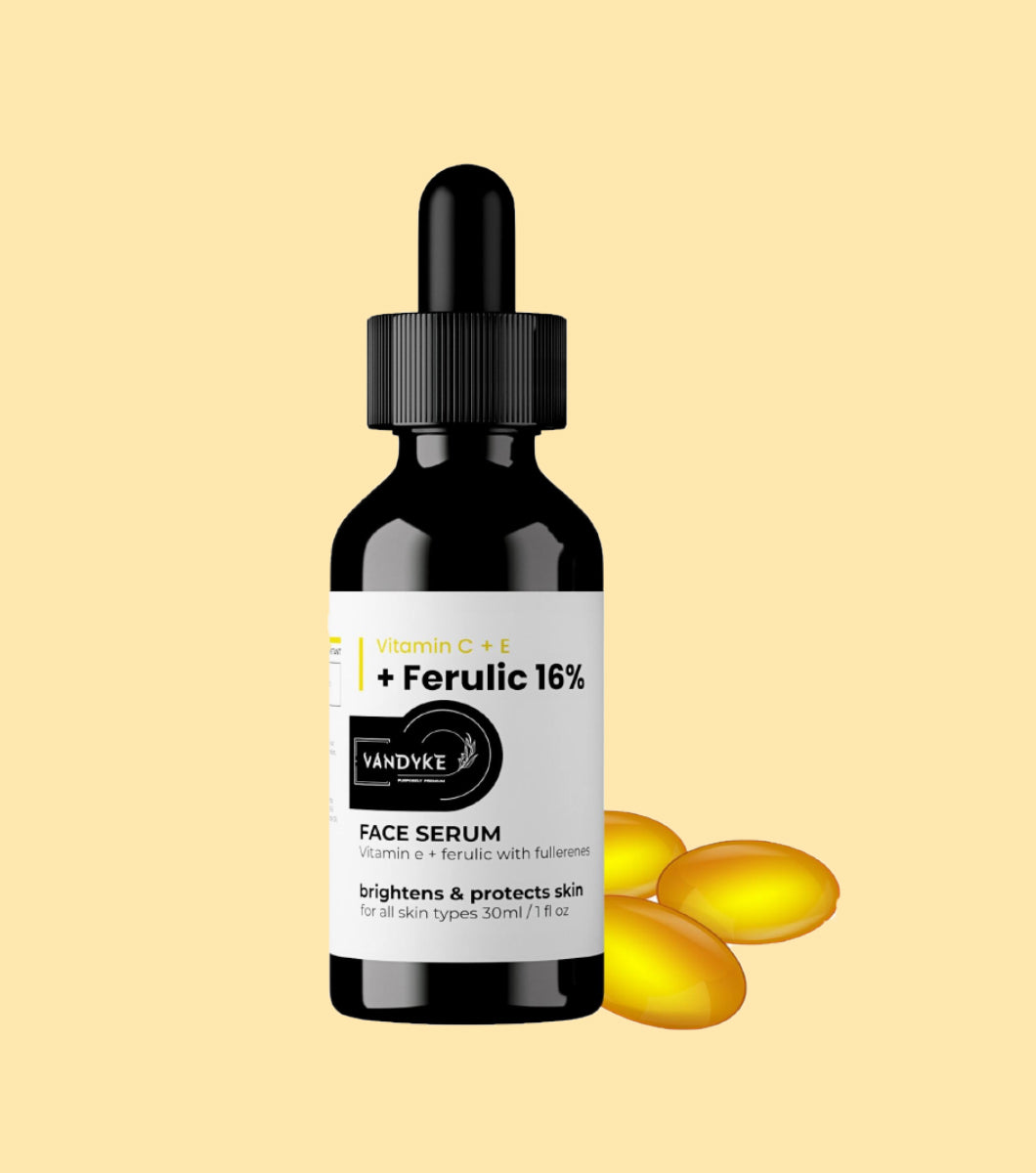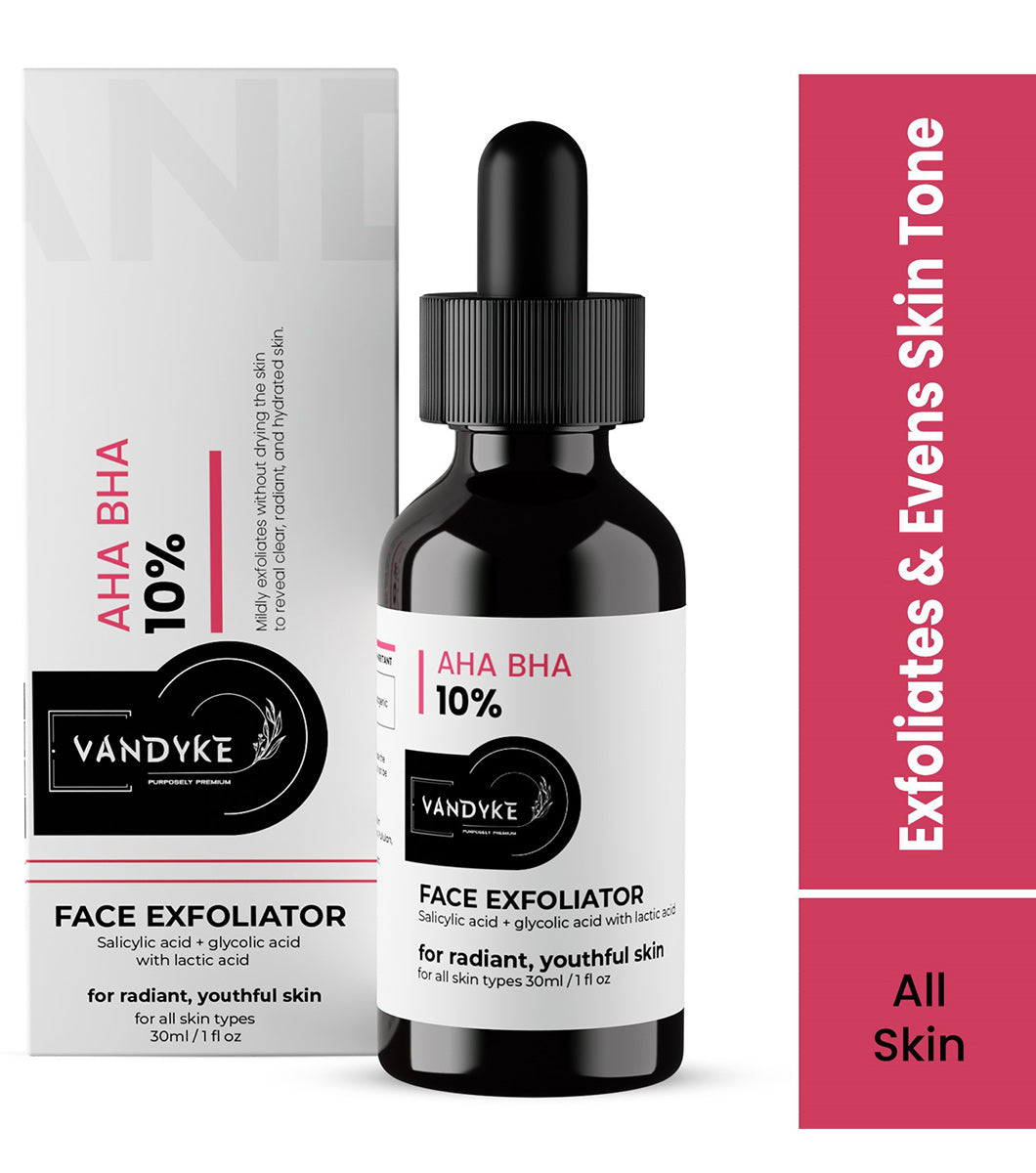
Salicylic Acid Most Commonly Used Topical Face Acids!

Salicylic Acid Most Commonly Used Topical Face Acids!
Yes, that’s correct! Salicylic acid is a popular ingredient in many skincare products, especially those designed for treating acne-prone or oily skin. It is a type of beta-hydroxy acid (BHA) that can exfoliate the skin, unclog pores, and reduce inflammation.
Salicylic acid works by penetrating deep into the pores and dissolving the oil and dead skin cells that can cause acne. It also has anti-inflammatory properties that can help to calm redness and irritation.
In addition to treating acne, salicylic acid Serum can also be beneficial for other skin concerns such as hyperpigmentation, fine lines, and rough texture. However, it is important to use salicylic acid in moderation and to follow the instructions on the product label, as overuse can lead to dryness, irritation, and other side effects. Vandyke Best Skincare products in India brought deep information about Salicylic acid Most Commonly Used Topical Face Acids.
How Salicylic Acid Works on Skin?
Salicylic acid works by penetrating the pores of the skin and exfoliating the dead skin cells that can clog them. It is a type of beta-hydroxy acid (BHA) that is oil-soluble, meaning it can penetrate deep into the pores and break down the sebum (oil) that can cause acne.
When applied to the skin, Salicylic Acid 02% Serum helps to loosen and dissolve the bonds between dead skin cells, allowing them to be easily shed from the surface of the skin. This process helps to unclog pores and prevent the formation of blackheads, whiteheads, and other types of acne.
In addition to its exfoliating properties, salicylic acid also has anti-inflammatory and antibacterial properties, which can help to reduce redness and inflammation associated with acne. It can also help to control oil production, which is another factor that can contribute to acne.
Overall, salicylic acid is a versatile ingredient that can be beneficial for a wide range of skin concerns, including acne, hyperpigmentation, and rough texture. However, it is important to use salicylic acid in moderation and to follow the instructions on the product label, as overuse can lead to dryness, irritation, and other side effects.
Topical Salicylic Acid as Anti-acne Agent:
Salicylic Acid 02% face serum is an effective topical anti-acne agent due to its ability to exfoliate the skin and penetrate deep into the pores. When applied to the skin, salicylic acid can help to:
- Unclog pores: Salicylic Acid 02% face serum works by dissolving the excess oil and dead skin cells that can clog pores and lead to acne breakouts. By unclogging pores, salicylic acid helps to prevent the formation of new pimples.
- Reduce inflammation: Salicylic Acid 02% serum has anti-inflammatory properties that can help to reduce redness and inflammation associated with acne.
- Control oil production: Salicylic acid can help to regulate the production of sebum (oil) in the skin, which is a major contributing factor to acne.
- Prevent acne scars: 02% Salicylic acid can also help to prevent the formation of acne scars by promoting the shedding of dead skin cells and reducing inflammation.
Salicylic acid is often found in a variety of over-the-counter acne treatments, including cleansers, toners, and spot treatments. It is important to use salicylic acid products as directed and to avoid overuse, as excessive use can cause dryness and irritation. In addition, people with sensitive skin or allergies to salicylic acid should avoid using products that contain this ingredient.
Topical Salicylic Acid as an Exfoliant:
Salicylic acid is also an effective exfoliant due to its ability to penetrate deep into the pores and dissolve the bonds between dead skin cells. When used topically, salicylic acid can help to:
- Smooth skin texture: Salicylic acid 02% face serum can help to smooth out rough, uneven skin texture by removing dead skin cells and promoting the growth of new, healthy skin cells.
- Improve skin tone: Salicylic acid face serum can also help to improve the overall tone and brightness of the skin by removing dull, dead skin cells and revealing the fresh, healthy skin underneath.
- Clear up acne: Salicylic acid’s exfoliating properties can also help to clear up acne by removing the excess oil and dead skin cells that can clog pores and lead to breakouts.
- Reduce the appearance of fine lines and wrinkles: Regular use of salicylic acid serum can help to reduce the appearance of fine lines and wrinkles by promoting the production of collagen, which helps to keep skin firm and elastic.
Salicylic acid is found in a variety of skincare products in India, including cleansers, toners, serums, and masks. It is important to use salicylic acid products as directed and to avoid overuse, as excessive use can cause dryness and irritation. People with sensitive skin or allergies to salicylic acid should avoid using products that contain this ingredient.
What is the Recommended Form and Dosage for Skincare?
The recommended form and dosage of salicylic acid for skincare can vary depending on the specific product and the individual’s skin type and concerns. However, in general, Salicylic Acid is One Of The Most Commonly Used Topical Face Acids found in the following forms and concentrations:
- Cleansers: 2% Salicylic cleanser typically contains a concentration of 2% salicylic acid. They are designed to be used once or twice a day as part of a daily skincare routine for face care routine for glowing skin.
- Toners: Salicylic acid toners typically contain a concentration of 0.5% to 2% salicylic acid. They are designed to be used after cleansing and before applying other skincare products.
- Serums: Salicylic acid 02% serums typically contain a higher concentration of salicylic acid, ranging from 2%. They are designed to be used once or twice a day, depending on the individual’s skin type and concerns.
- Spot treatments: Salicylic acid spot treatments typically contain a higher concentration of salicylic acid, ranging from 2% to 10%. They are designed to be applied directly to individual pimples or acne-prone areas.
It is important to follow the instructions on the product label and to start with a lower concentration of salicylic acid and gradually increase as tolerated. Overuse or using a concentration that is too high for the individual’s skin type can cause dryness, irritation, and other side effects. It is also important to avoid using salicylic acid 02% products with other exfoliants, such as alpha-hydroxy acids (AHAs), as this can increase the risk of irritation.
How to Use Salicylic acid in Your Daily Skincare Regime?
Salicylic acid most commonly used topical face acids can be incorporated into your daily skincare routine in several ways or face care routine for glowing skin, depending on your skin type and concerns. Here are some general guidelines for using salicylic acid in your daily skincare regime:
- Start with a lower concentration: If you are new to using salicylic acid in any form salicylic acid 02% serum, 2% Salicylic cleanser or 1% Salicylic Acid Gel Face it is best to start with a lower concentration (0.5% to 2%) to allow your skin to adjust to the product. You can gradually increase the concentration as your skin becomes more accustomed to the ingredient.
- Use it once a day: Salicylic acid can be used once or twice a day, depending on the product and your skin type. It is best to start by using it once a day and then gradually increasing to twice a day if necessary.
- Use it after 2% Salicylic cleanser : Salicylic acid is most effective when applied to clean, dry skin. After cleansing your face, apply the salicylic acid product to your skin, avoiding the eye area.
- Follow with a moisturizer: Salicylic acid serum can be drying, especially if used in higher concentrations or if you have dry or sensitive skin. It is important to follow up with a moisturizer to help hydrate and protect your skin.
- Use sunscreen: Salicylic acid gel can make your skin more sensitive to the sun, so it is important to apply a broad-spectrum sunscreen with an SPF of 30 or higher during the day.
- Use as directed: Always follow the instructions on the product label and do not overuse salicylic acid. Using too much or too often can cause dryness, redness, and irritation.
By incorporating salicylic acid into your daily skincare routine, you can help to improve the texture and clarity of your skin, while also preventing and treating acne. However, if you experience any irritation or allergic reactions, stop using the product and consult a dermatologist.
What Are The Potential Side Effects of Salicylic Acid?
While salicylic acid is generally considered safe for topical use, some people may experience side effects. Here are some potential side effects of salicylic acid:
- Dryness and irritation: Salicylic acid can cause dryness and irritation, especially if used in high concentrations or applied too often. This can lead to redness, itching, and flakiness.
- Sensitivity to the sun: Salicylic acid can increase the skin’s sensitivity to the sun, so it is important to use sunscreen with a high SPF during the day when using salicylic acid products.
- Allergic reactions: Some people may be allergic to salicylic acid or other ingredients in skincare products that contain salicylic acid. Signs of an allergic reaction may include itching, rash, swelling, or difficulty breathing.
- Peeling and flaking: Salicylic acid can cause the outer layer of skin to peel or flake off, which can be a desired effect when treating acne or exfoliating the skin. However, excessive peeling or flaking can be a sign of irritation and should be monitored.
- Interaction with other skincare products: Salicylic acid can interact with other skincare products, such as retinoids, benzoyl peroxide, and alpha-hydroxy acids, which can increase the risk of dryness and irritation.
It is important to use salicylic acid products as directed and to start with a lower concentration to allow your skin to adjust to the ingredient. If you experience any side effects, stop using the product and consult a dermatologist.
Can Pregnant or Lactating Women use Salicylic Acid?
It is generally recommended that pregnant or lactating women avoid using high concentrations of salicylic acid, as the safety of the ingredient during pregnancy and breastfeeding has not been fully established. While topical use of low concentrations of salicylic acid is generally considered safe, it is best to consult with a healthcare provider before using any skincare products containing salicylic acid during pregnancy or while breastfeeding. As an alternative, pregnant or lactating women may want to consider using other acne-fighting ingredients that are considered safe during pregnancy, such as benzoyl peroxide or azelaic acid.




































